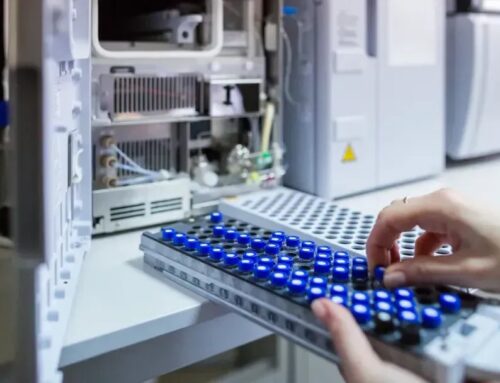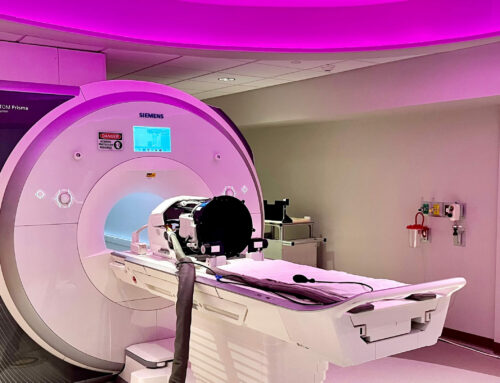By Dr. Ravi Starzl, Adjunct Professor at Carnegie Mellon University and CEO of Firebreak Inc. |
As the world battles the COVID-19 virus, health officials and scientists are now fighting a protracted battle against a steady stream of aggressive variants, a situation I call “COVID-X”, where a variety of increasingly transmissible and virulent mutants will continue to prevent the world from getting to and maintaining “back to normal.”
Although safe and effective vaccines are an important part of any public health strategy, the global vaccine effort for COVID-19 has fallen far short, and all indications are that it will not catch up for years, if ever. Major variants that demonstrate increased viral escape are emerging every couple of months, and already early COVID-19 strains have been replaced with more transmissible and deadly variants. This trend will continue, and even accelerate with the steady trend of new variant infections globally.
Firebreak is a term originally created by the Defense Advanced Research Projects Agency (DARPA) to describe technology that can rapidly be developed to interrupt the spread of a disease. What a Firebreak is designed to do is help the world stay one step ahead of a virus. In this case, my research suggests that it will be the development of easily available antibody barriers or preventives that deal with new variants before they inevitably emerge. Variants progressively increase viral escape, eventually to such a point that vaccines and booster shots are challenged to keep up.
Going beyond vaccines
In the face of the growing need to protect people from the virus, unprecedented vaccine development efforts have been made. But they are not enough. Vaccines, monoclonal antibodies, plasma infusions – all rely primarily on antibodies to do their good work. Since 2007, the antibody industry has exploded as the utility of the small and relatively simple molecular machines has been recognized. By 2025, the antibody industry will be worth more than a combined $300 billion USD.
As the world has witnessed, the traditional development of antibodies and vaccines is prohibitively expensive. Additionally, there is no good plan or path to global vaccine or antibody access. Those regions of the world that have outmoded vaccines or limited vaccine coverage will become the reactor cores for the next wave of escaped variants that will threaten every country, including those with high vaccination rates. Until now, the only methods of pandemic control that have been proven successful are mask mandates and travel restrictions. The reduction in new cases is visible every time a lockdown or travel restriction is imposed. In the absence of these measures, even vaccines alone are not standing up to the test.
On June 5th, Chile had administered approximately 19.5 million vaccinations to its residents: a per-capita vaccination rate better than that of the United States. However, on that same date, Chile was experiencing a surge of new cases. As a result, the government instituted another lockdown, including a total lockdown of the capital, Santiago. Only after these lockdowns did the rate of new infections begin to decline.
The path to combating this virus and COVID-X requires creative and innovative solutions. Beyond the slow and lumbering vaccine development process in place, we need better tools. Here is a closer look at how we can use AI and other statistical modeling efforts to disrupt the devastating course of this and future pandemics:
Using computational methods
What is critical is for the medical community to design tomorrow’s pandemic prevention antibodies today. Computational methods can greatly accelerate discovery and validation of antibodies. Firebreak models the binding interactions of antigens (such as the spike protein) with receptors (such as ACE2). The model then evaluates countless numbers of possible antibody interactions with both the virus and the receptor to find antibody binding configurations that provide the best interference with the antigen-receptor docking. While physics-based modeling of systems is intuitively compelling, a great deal of important information about the true reality of antigen-antibody-receptor interactions are still unknown.
In a domain like biology, where we still know so little about how it really works, it is vital to understand that the models are just promising predictions. They are only as good as the question you are asking, and you can only express what your system is designed to handle. The basic philosophy behind Firebreak is that it engages in active learning by taking the most promising model results and confirming the outcomes with actual laboratory experiments. In this way, a limited number of experiments is able to provide a large amount of disambiguation and feeds a virtuous cycle of improved predictions, that have greater utility, and that can speed discovery of ever more useful antibodies – for COVID-19 and well beyond.
Using Natural Language Processing
The method uses sophisticated statistical methods and natural language processing to build models on the interaction of pathogens, antibodies and receptors described in scientific literature. A natural language processing-based method is used to create models from the linguistic descriptions available in the combined corpus of all online medical and scientific literature. By using sophisticated computational linguistic methods, interactions between known antigens, antibodies, and receptors can be captured and analyzed to quickly create a data-cube of all known interactions between subjects of interest. This is then projected into a new set of bases through the creation of synthetic variables that capture into a useful structure the information residing in the use of language. This model can then be varied to create predictive scenarios about potential binding events or antibody motifs that block infection for a wide range of diseases.
Preventing the next virus outbreak
Natural Language Processing and computational models are desperately needed tools for the COVID-19 fight. They will certainly disrupt the antibody industry, and make these life changing medicines affordable globally. A key part of the strategy needed now and in the future is to use high-end artificial intelligence to enable rapid targeting of virtually any pathogen of interest. AI and an integrated active-learning process coupled with more affordable and easily available antibodies is a forward-looking approach that will better prepare governments and communities around the world for future virus outbreaks. The COVID-19 pandemic offers a trigger for the medical and scientific communities to use the vast amounts of data currently being gathered and analyzed using machine learning to identify critical characteristics that will be useful in developing antibodies to better protect people around the world from the next virus.

About the Author
Dr. Ravi Starzl’s passion is solving hard problems that matter. He is working at the intersection of artificial intelligence, entrepreneurship, and biotechnology with a current focus on addressing Antimicrobial Resistance, Hospital Acquired Infections, and Antibody Barrier platforms with novel, sustainable, ethical, and valuable solutions. He is a specialist in the computational analysis and modeling of complex information-driven systems with deep expertise in biotech, applied AI / machine learning, and entrepreneurial execution. His methods are highly interdisciplinary, convergent, and often unorthodox with current focus on concrete double-bottom-line projects.
Dr. Starzl is an Adjunct Professor at Carnegie Mellon University. He received his doctoral degree in Language and Information Technologies from the School of Computer Science at Carnegie Mellon University. He serves as CEO of Firebreak Inc., a company focused on developing antibody-based solutions to solve the world’s biggest health crises.












